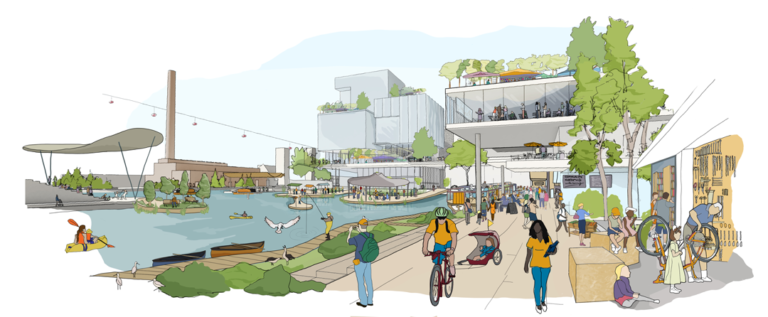In the stage of rapid urban development, our streets are gradually dominated by motor vehicle traffic, and the original pedestrian space was occupied, thus losing the charming urban space experience. Nowadays, more and more people realize that streets should return to the greatest potential public space in the city, the redefinition and recognition of streets Read the full article…

The origin of co-living community Around 2013, major cities around the world began another O2O revolution under the sharing economy: co-living community[1]. From London, New York and San Francisco in the West. Go to Beijing, Shanghai, Guangzhou, Tokyo, and Seoul in the east. In addition to the high cost of living, most of its residents are Read the full article…

Public spaces are the beating heart of our communities, serving as essential hubs for social interaction, leisure, and contemplation. Not to mentioned the well-designed public spaces. Figure 1. Domino Park is a privately-owned public space in Brooklyn, developed by real estate firm Two Trees Management. (Harrouk, 2019) They are more than just physical objects; they Read the full article…

A city’s quality of life is directly reflected in how sensitive its urban design is to public health. And why? As it would eventually by all means have an impact on the general public during a crisis. Certainly, this claim is supported by a number of historical events. So, let’s start from its origins. (Kuvar, Read the full article…

Reviving Public Spaces: The Impact of Digital Placemaking Since the global digital boom, social interaction has becoming rapidly digitalised, generating a contemporary society that’s increasingly detached from the traditional uses of urban public spaces. Figures show that over 90% of households now have access to the internet, and at least 87% use smartphones. With conversations Read the full article…

What kind of public spaces are successful? Before turning to how to assess the effectiveness of a quality public space, it’s important to note that public space is an area or place that provides access to all members of the community or the wider public. Therefore, public space is usually assessed whether it is positive Read the full article…

A public space is a place that is open and accessible to the general public (wikipedia). It is an important aspect of urban design. Creating a suitable physical framework can encourage people to use public spaces, engage in social activities, and spend more time outdoors . Therefore, the design and quality of public spaces are essential in Read the full article…
As a female urban designer I am passionate about fostering intersectionality and ensuring universal accessibility within urban design, I aim to shed light on a crucial topic that resonates deeply with my convictions. One area I am particularly keen to discuss is inclusive urban design for women… Shaping Inclusive Cities: Women’s Safety and Empowerment in Read the full article…

The High Street is Dead, Long Live the High Street. Lockdown – March 2020. This mandate single-handedly halved footfall across UK High Streets (Enoch et al, 2021). However, the decline of our High Streets was a reality that predated the pandemic. The ‘death of the high street’ is a notion being used by many experts Read the full article…

In public places, women have long been subjected to street harassment. According to a study conducted by the UN Women National Committee UK (2021, pp.6), only 3% of women in the UK claim to have never been subjected to any forms of street harassment in public places. As a result, when commuting in an urban Read the full article…

I have worked on many different various kinds of design projects during my bachelor’s as an architect. Now, as a masters prospect I have worked on projects which majorly dealt with housing or mixed-use spaces. I always wanted to work on public open spaces and topics covering community engagement and adaptive use of open spaces Read the full article…


